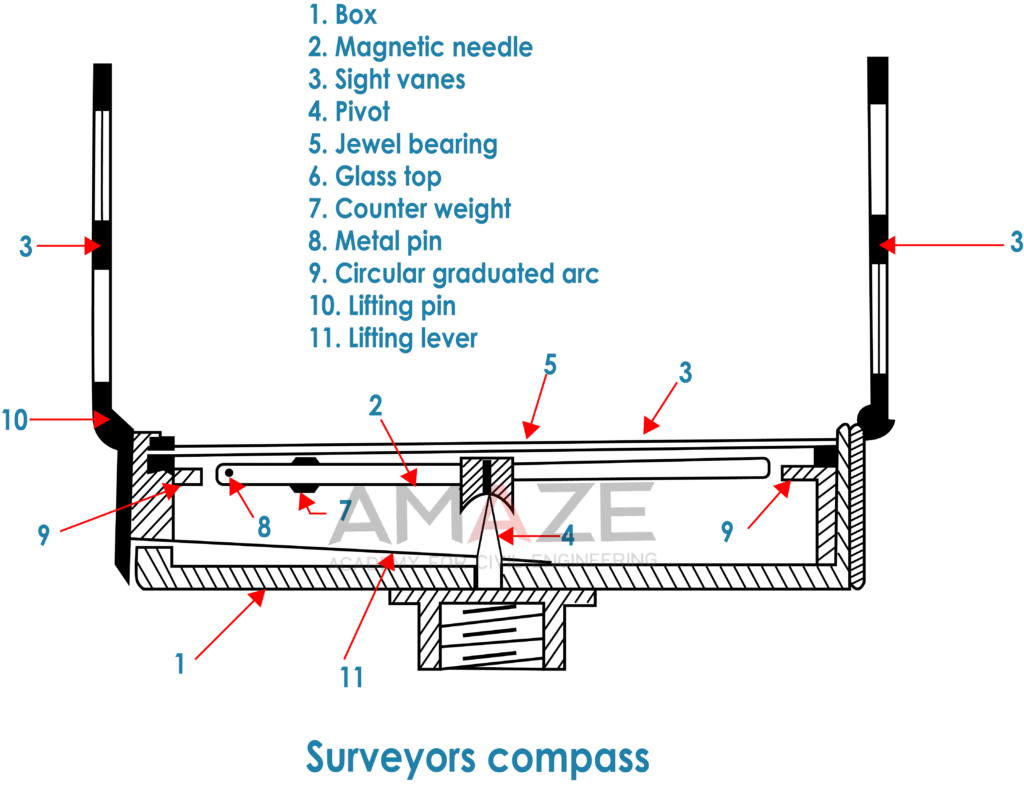Compass surveying is a type of surveying in which the directions of surveying lines are determined with a magnetic compass, and the length of surveying lines are measured with a chain or tape or laser range finder. The compass is generally used to run a traverse line.
A Circumferentor or Surveyor’s compass is an instrument for determining the horizontal direction of a line with reference to the direction of a magnetic needle. The needle is balanced at its centre on a “pivot” so that it swings freely in a horizontal plane. This compass is considered as an accurate measurement for surveying. Most of the surveyor’s compasses are made of brass.
PARTS OF A SURVEYOR’S COMPASS
A Surveyor’s compass essentially consists of a graduated circle or disc fitted to a box. A magnetic needle, an edge bar needle freely floats over the pivot. Unlike a Prismatic compass, it has a narrow slit at the viewing end. The sight of the line is fixed and the reading is directly taken from the top of the glass cover.

- Graduated disc or Ring: It is fixed with the compass box. It moves along with the movement of the box but the magnetic needle in it remains stationary with poles of North-South. The ring is divided into 4 quadrants (0-900 each). N and S points have 00 graduation and E and W have 900. Graduations are not inverted. So reading can be directly taken from a glass cover having a narrow slit at the viewing end.
- Magnetic needle: It remains stationary in the North-South direction. While taking readings, the ends of the needle acts as an index.
- Jewel bearing: It is placed at the Centre of the box to support the movement of the magnetic needle.
- Pivot: It is connected with a jewel bearing as a hinge.
- Lifting lever: It rises the magnetic needle to stick to the glass cover to stop its damp oscillations.
- Circular box: It is the circular part attached to the graduation circle.
- Eye vane and object vane: The eye vane consists of as a simple metal vane using a fine slit. Since no prism is provided, the object is to be first sighted with the eye and object vanes, and the reading is then taken against the North end of the needle by looking vertically through the top glass. The eye vane is used to observe the line of sight while on the object vane image of the object is formed.
- Bubbling tube: There is bubbling tube for accurate levelling of the compass.
